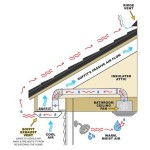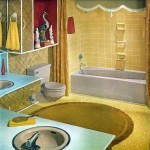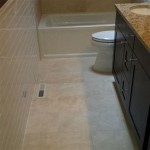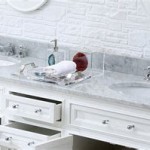Why Do You Get Ants In The Bathroom?
While bathrooms might seem like an unlikely haven for ants, the reality is that these tiny creatures are quite adaptable and often find their way into these spaces. Ants are attracted to food, water, and shelter, and bathrooms often inadvertently provide all three. Understanding the reasons behind ant infestations in bathrooms can help homeowners take proactive measures to prevent them.
Food Sources
One of the primary reasons ants enter bathrooms is the presence of food sources. Even if there's no visible food, ants can be attracted to crumbs, spills, or even toothpaste. For instance, food particles that fall to the floor during showers or toothpaste left on the sink can tempt ants. Other food items, like hairspray, soap, and shampoo, can also attract ants due to their sugary or acidic components. The occasional stray food particle or forgotten food item can quickly attract ants, making it crucial to maintain a clean and clutter-free bathroom.
Moisture and Water Sources
Ants require a constant supply of water to survive. Bathrooms, with their showers, sinks, and tubs, often provide ample moisture. A leaky faucet, a wet floor after a shower, or even condensation on a window can become a source of water for ants. It's important to note that even a small amount of water can be sufficient to attract ants, making it essential to carefully address any potential leakages. Furthermore, ants might find their way to the bathroom through water pipes, as they can travel along these routes from external areas.
Shelter and Nesting Sites
Bathrooms can offer ants a safe haven, particularly in the humid environment. They can find spaces to nest within the walls, under the sink, or even behind loose tiles. These spaces offer a suitable microclimate for ants to establish their colonies. Additionally, the warmth and humidity within bathrooms can be an attractive environment for ants, particularly during colder seasons. The presence of cracks and crevices in bathroom flooring, walls, and fixtures can further facilitate ant entry and nesting.
Different Ant Species and Their Preferences
Different species of ants have varying preferences for nesting and food sources. For example, carpenter ants often prefer damp wood and can cause significant damage to bathroom structures. Odorous house ants, are attracted to both sweets and greasy foods and are commonly found in bathrooms. Identifying the specific ant species present can help determine the best course of action to address the infestation.
Prevention Measures
Preventing ants from entering the bathroom is crucial to avoiding infestations. Regularly cleaning and disinfecting the bathroom can help eliminate food sources and discourage ants. It's important to thoroughly wipe down surfaces, pay attention to hidden spots, and dispose of trash promptly. Addressing any leaks or moisture problems effectively is essential to eliminate water sources. Sealing cracks and crevices in the bathroom, especially those around plumbing pipes, can prevent ants from entering and nesting. The use of ant baits and repellents can also contribute to the successful prevention of ant infestations.
Conclusion
Understanding why ants enter bathrooms can guide homeowners in taking proactive steps to prevent and address infestations. By eliminating food sources, moisture, and potential nesting sites, the risk of encountering ants in this space can be significantly reduced. Regular maintenance and preventive measures are crucial for maintaining a pest-free bathroom environment.

How To Stop Ants From Invading Your Bathroom Identification And Prevention Tips Tabor Pest Control

Niagara Pest Control Why Are There Carpenter Ants In The Bathroom

Boise Idaho Pest Control Pestcom

Why Do I Have Ants In My Bathroom

Have Ants In Bathroom 2024 4 Simple Steps That Work

How To Get Rid Of Tiny Ants In Your Bathroom

How To Get Rid Of Ants In The Bathroom

How To Get Rid Of Ants In The Bathroom Atkinson Inspection Services

Keeping Ants Out Of Your Bathroom Extermpro

Boise Idaho Pest Control Pestcom
Related Posts







